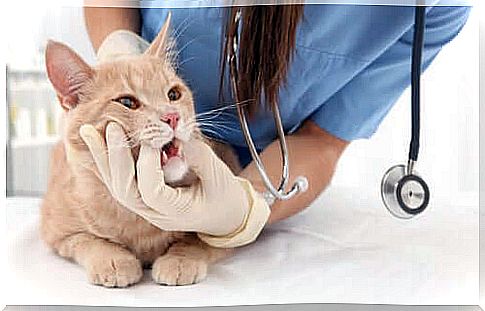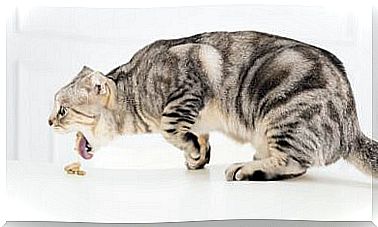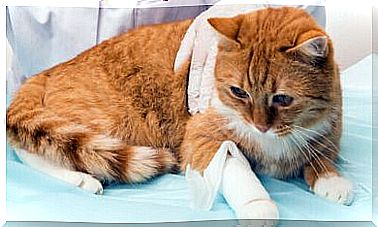Feline Asthma In Cats: How To Notice It?

Feline asthma is very similar to human asthma. It is a chronic inflammation that affects the cat’s lung ducts. When an asthma attack occurs, these ducts thicken and contract, making it difficult for the cat to breathe.
This condition causes respiratory distress syndrome which can aggravate the cat’s condition within minutes. The lungs may also begin to discharge mucus into the airways, causing coughing and wheezing.
Some cats with milder symptoms have only a mild but chronic cough. Because feline asthma can quickly become a life-threatening health problem, when a cat has a cough it is best to take him to the vet right away.
General symptoms of feline asthma
- Persistent cough.
- Wheezing.
- Shortness of breath.
- Cough with foamy mucus.
- Mouth open to breathe.
- Blue lips and gums.
- Shortness of breath after exertion.
- General weakness and lethargy.

What Causes Feline Asthma?
Although there are a number of factors that contribute to feline asthma, it is believed to develop as a result of allergic bronchitis. Allergic bronchitis occurs when the airways in the lungs become inflamed as a result of inhaling an allergen or another substance that stimulates the immune system.
Factors that can contribute to the severity of an asthma attack are:
- Allergens: including pollen, mold, cat litter dust, cigarette smoke, perfumes, and some foods.
- Pre-existing heart disease.
- Parasites.
- Excessive stress.
- Obesity.
Symptoms similar to those of feline asthma can also be associated with other diseases such as filariasis, the presence of respiratory tract parasites, tumors, heart failure and pneumonia.
Are some cat breeds more prone to feline asthma?
Feline asthma generally develops in cats between the ages of two and eight, with a higher incidence in females than males. Siamese and Himalayan cats and mixed breeds appear to suffer from asthma more frequently than other breeds.
What should i do if i think my cat has asthma?
If you think your cat has asthma, take him to the vet right away. This professional will perform a physical exam and will most likely recommend diagnostic tests to find out what may be causing the problem.

How is feline asthma diagnosed?
Since the symptoms of asthma can be similar to those of other diseases such as heartworm, pneumonia and congestive heart failure, it is very important for the vet to determine exactly the cause of the attacks.
There are no specific tests to detect asthma, but usually x-rays, blood tests, parasite tests, and bronchial secretions are analyzed to rule out other causes.
How can feline asthma be treated?
While there is no real cure for feline asthma, there are several ways to successfully manage the disease. Effective therapy can include medications that open the airways, reduce inflammation, or change the body’s immune response. As with human asthma, the drug is administered through an inhaler specially adapted for cats.
How can I avoid my cat’s asthma attacks?
- Have your cat examined regularly to check for parasites.
- Reduce your pet’s exposure to stress. Stress tends to worsen asthma and allergy symptoms.
- In areas where cats live, do not use perfumes, air fresheners, carpet deodorants, hairspray, spray cleaners, etc.
- Avoid using cat litter that produces a lot of dust, scented litter or litter additives.
- Dry environments promote asthma attacks. Then, humidify the environments in which the cat lives, especially during the winter months.
- Encourage your cat to exercise and avoid being overweight.
Very important: no cats should be exposed to cigarette smoke. If you have asthma, it will only make your condition worse.









